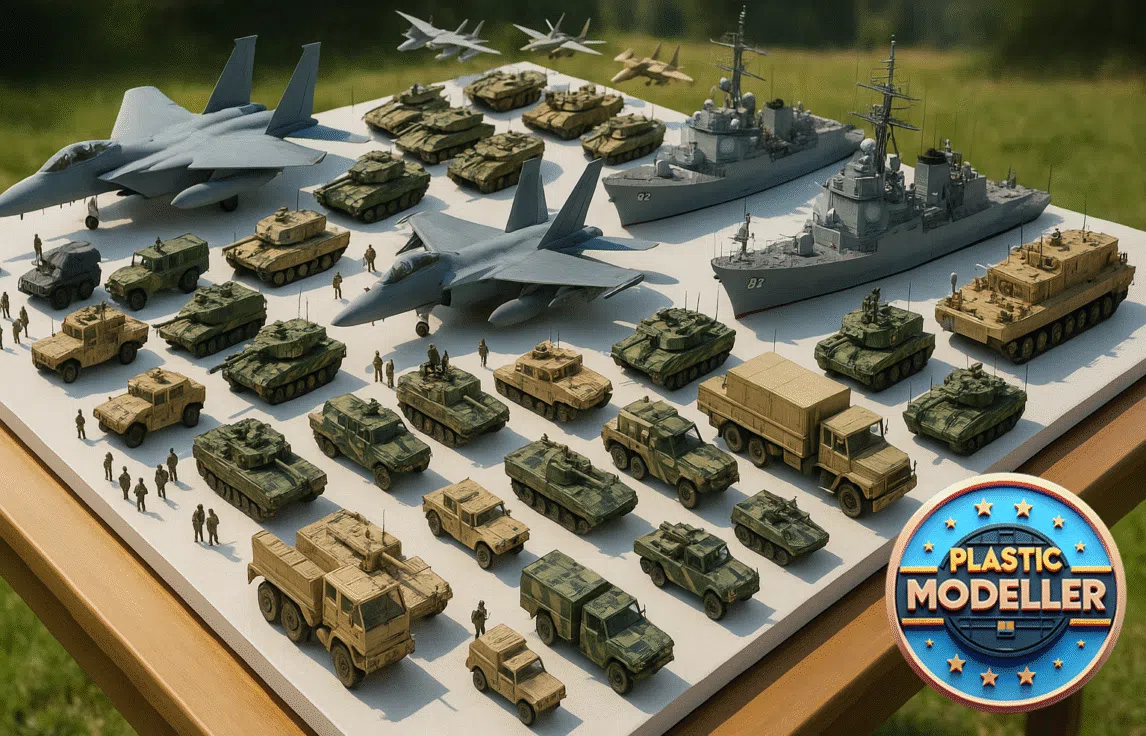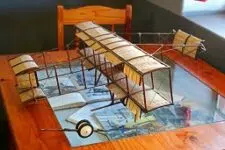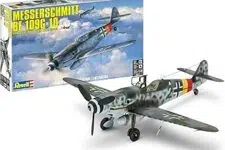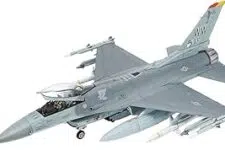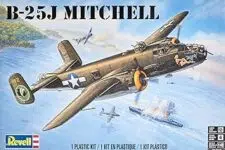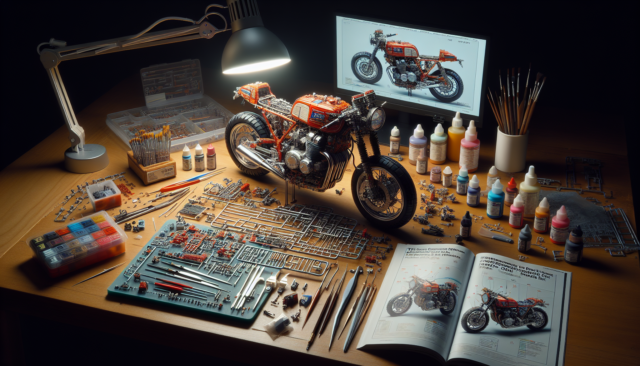
Table of Contents
Motorcycle Kits: Miniature Marvels
As a lifelong enthusiast of miniature marvels, nothing quite excites me as the intricate world of plastic motorcycle model kits. With the deft touch of our hands and keenness of our eyes, we transform unassembled pieces into breathtaking replicas that echo the roar of their life-sized counterparts. Whether you’re here to craft a miniature powerhouse like the Tamiya 1982 Honda CB1100R or an elegant masterpiece such as the Hasegawa 2001 Honda NSR250 Daijiro Kato, this comprehensive guide serves as your trusted companion.
Along the way, I’ll delve into the history of the modern kit industry and explore how detailed motorcycle models aren’t just a pastime; they’re a testament to skill and patience for seasoned builders and a delightful challenge for novices alike.
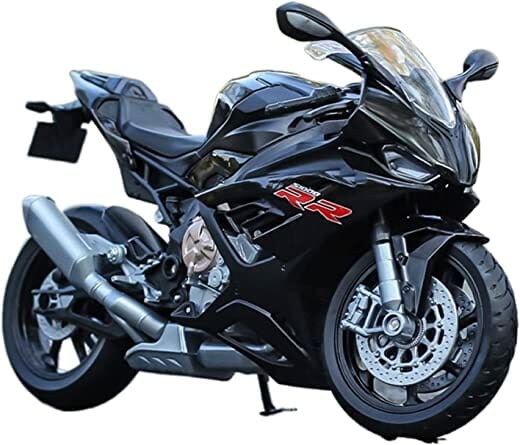
Building A Scale Model Kit
Crafting a motorcycle model kit offers a canvas upon which we can project our creativity and precision—whether you opt for the quick and dirty approach or aim for painstaking accuracy. In our quest to help you build the perfect miniaturized beast, I’ll also share a step-by-step guide that illuminates the path from picking the right motorcycle models to the finishing touches of paint and decals.
And if you’re wondering how to paint plastic motorcycle parts or seek the thrill of customization, fret not; I’ll cover that too. So, let’s gear up and throttle forward, for this journey through the art and finesse of building plastic motorcycle model kits is one that promises satisfaction and a proud display of your handiwork.
Choosing the Right Motorcycle Model Kit
Skill Level and Complexity:
- If you’re new to the hobby, begin with beginner kits which feature fewer pieces and require less intricate work. These are designed to help you get a feel for the process without overwhelming you.
- For the more experienced or ambitious builder, expert kits offer a challenging and detailed project, often comprising hundreds of parts that demand a higher level of precision and patience.
When setting out to select the perfect plastic motorcycle model kit, there are several factors to consider that will ensure your building experience is both enjoyable and rewarding.
Scale and Size:
- The scale of the model is a crucial consideration; it dictates the size of the finished product. A 1/12 scale model will be 12 times smaller than the actual motorcycle.
- The choice of scale affects not just the display space you’ll need but also the level of detail you can expect. Larger scales typically offer more detail, allowing for more intricate customization and finishing.
Brand and Manufacturer Reputation:
- Renowned brands like Tamiya, Revell, and ATM are known for their high-quality kits that offer a satisfying building experience and a beautiful end result.
- It’s also worth exploring kits from Hasegawa, Heller, Italeri, MPC, Fujimi, and Meng Model, each bringing their own unique qualities and model options to the table.
Type and Nostalgia:
- The type of model motorcycle kit you choose can be a personal preference or one based on the historical or nostalgic value of the model. Whether you’re drawn to classic American choppers or sleek Japanese race bikes, there’s a kit out there for you.
- These plastic models motorcycles are not just a hobby but a means to connect with the past and share a passion with fellow enthusiasts or the next generation.
Budget and Price:
Prices can vary widely based on the complexity, brand, and scale of the model. It’s important to find a balance between what you’re willing to spend and the quality of the model you wish to build.
For those starting out, consider these recommended models which balance detail with manageability:
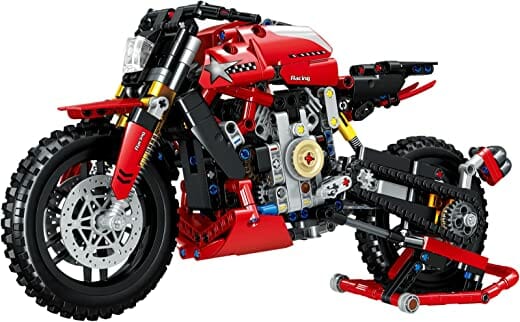
Tamiya’s 1982 Honda CB1100R: A classic model that’s both enjoyable to assemble and impressive to display.
Hasegawa’s 2001 Honda NSR250 Daijiro Kato: Perfect for fans of racing bikes looking for a detailed motorcycle model with historical significance.
MPC Honda Trail 70: An excellent choice for those interested in vintage bikes, offering a simpler build with a nostalgic appeal.
Incorporating these factors into your decision-making process will help you choose a motorcycle model kit that not only meets your current skill level but also provides the satisfaction of building something truly remarkable. Remember, the journey of crafting these miniature motorcycle models is just as important as the display-worthy finished product. Whether you’re a seasoned builder or a curious newcomer, the world of plastic motorcycle model kits for adults awaits your creativity and dedication. And once you’ve mastered the assembly, you can explore the art of how to paint plastic motorcycle parts to add your personal touch to these exquisite replicas.
Step-by-Step Guide to Building Your Model Kit
Embarking on the journey of assembling a plastic motorcycle model kit is a rewarding endeavor that combines precision and creativity. With the right tools and software, even the most detailed motorcycle models can be brought to life. Here’s how we can proceed:
Step 1: Designing the Motorcycle Model
- Begin by gathering inspiration for your motorcycle model. Watch tutorials and explore various motorcycles to decide on the design for your scale model kit. A great resource is a detailed walk-through on YouTube where enthusiasts share their experiences and tips.
- Once you’ve selected a design, use Autodesk Sketchbook Designer to create a digital sketch of your motorcycle frame. This software allows for precise and flexible design, ensuring your vision is accurately translated into a digital format.
Step 2: Modeling and Prototyping
- With your design in hand, it’s time to turn sketches into 3D models. Utilize Autodesk Inventor Pro to craft rims, fenders, and other components. This software is pivotal in creating detailed parts and generating STL files, which are essential for 3D printing.
- After modeling, proceed to 3D print the parts. This rapid prototyping is an exciting phase where you see your digital models take physical form. Ensure your 3D printer is set up with CatalystEX to achieve the best results.
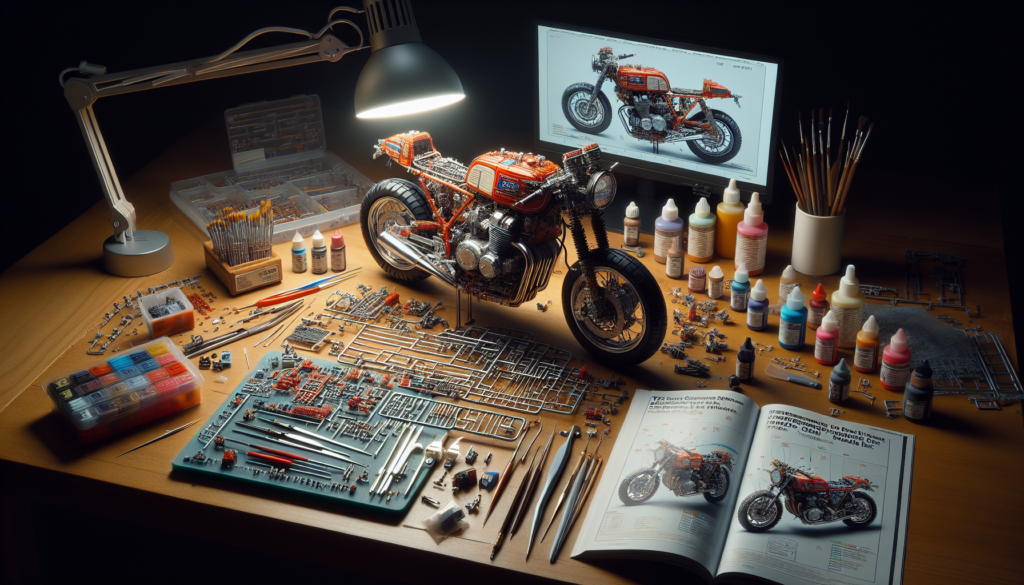
Step 3: Assembly and Finishing Touches
- Gather all printed parts and carefully assemble them using super glue. Patience is key here as you ensure each piece fits perfectly with the next.
- Once assembled, add color and life to your model with acrylic paint. Whether you’re using an airbrush for a smooth finish or a paintbrush for detailed work, how to paint plastic motorcycle parts is a skill that enhances the realism of your model.
- The final step is to place your completed masterpiece within a display case to protect and showcase your work.
Throughout this process, remember that patience and precision are your best tools. While the project may take around a week and a half, including printing and painting, the time invested will be well worth it when you see your miniature motorcycle models come to life. As you progress, you’ll not only improve your building skills but also deepen your appreciation for these exquisite replicas.
Conclusion
Throughout this guide, we’ve journeyed together from the shelves of kits to the display of finished masterpieces, tapping into both the history and step-by-step creation of a plastic motorcycle model kit. Our exploration has not just outlined the selections suitable for varying skill levels, but also highlighted the intricate and rewarding process of building, painting, and showcasing these miniaturized wonders.
As we draw this guide to a close, let it serve as a testament to the artistry and dedication that modeling embodies, and may it inspire both novices and seasoned builders alike. The culmination of patience and creativity in this craft offers more than just a physical model; it’s a portrayal of passion, a nod to nostalgia, and potentially, a bridge to shared experiences within the modeling community. Carry forward the insight and inspiration you’ve gained here, as you continue to craft your own spectacular replicas, each one a tribute to the legacy of their full-sized inspirations.
FAQs
Frequently Asked Questions (FAQs) About Plastic Motorcycle Model Kits
- What types of motorcycle model kits are available?
- There is a diverse range of plastic motorcycle model kits to choose from, including cruisers, classic bikes, road burners, and superbikes, catering to various interests and preferences. Whether you’re drawn to the sleek lines of a modern superbike or the timeless allure of a vintage roadster, there’s a model kit out there that will capture your imagination and provide a rewarding building experience.
- Can you recommend some kits for different skill levels?
- Absolutely! For beginners, the MPC Honda Trail 70 is a fantastic 1:8 scale model, ideal for ages 10 and above, and provides a less complex assembly, perfect for those just starting out. Intermediate builders might enjoy the Tamiya 1982 Honda CB1100R, a 1:12 scale model of one of Honda’s early superbikes, recommended for ages 14 and above. Those seeking a challenge can opt for the Hasegawa 2001 Honda NSR250 Daijiro Kato, a 1:12 scale replica of the championship-winning bike, which requires cement and paint for assembly, offering a more detailed and intricate project. Discover Motorcycle Model Kits for Adults.
- What are the benefits of building plastic motorcycle model kits?
- Engaging with motorcycle model kit is not just a pastime; it’s an educational hobby that provides insight into motorcycle mechanics and design. As you piece together these miniature motorcycle model kit, you’ll enhance your fine motor skills and develop patience. It’s a rewarding endeavor that results in a detailed motorcycle model, which can be a stunning display piece and a conversation starter. Additionally, learning how to paint plastic motorcycle parts can add a personal touch to your models, making each one unique.
Remember, the key to a satisfying build is to select a motorcycle plastic model kit that matches your skill level and interests. With a wide range of options and price points, from basic models around $20 to more complex kits over $100, there’s a perfect kit out there for everyone. And as you progress, you’ll find that the world of plastic models motorcycles is not only fun but also a testament to your dedication and craftsmanship.
- Engaging with motorcycle model kit is not just a pastime; it’s an educational hobby that provides insight into motorcycle mechanics and design. As you piece together these miniature motorcycle model kit, you’ll enhance your fine motor skills and develop patience. It’s a rewarding endeavor that results in a detailed motorcycle model, which can be a stunning display piece and a conversation starter. Additionally, learning how to paint plastic motorcycle parts can add a personal touch to your models, making each one unique.
